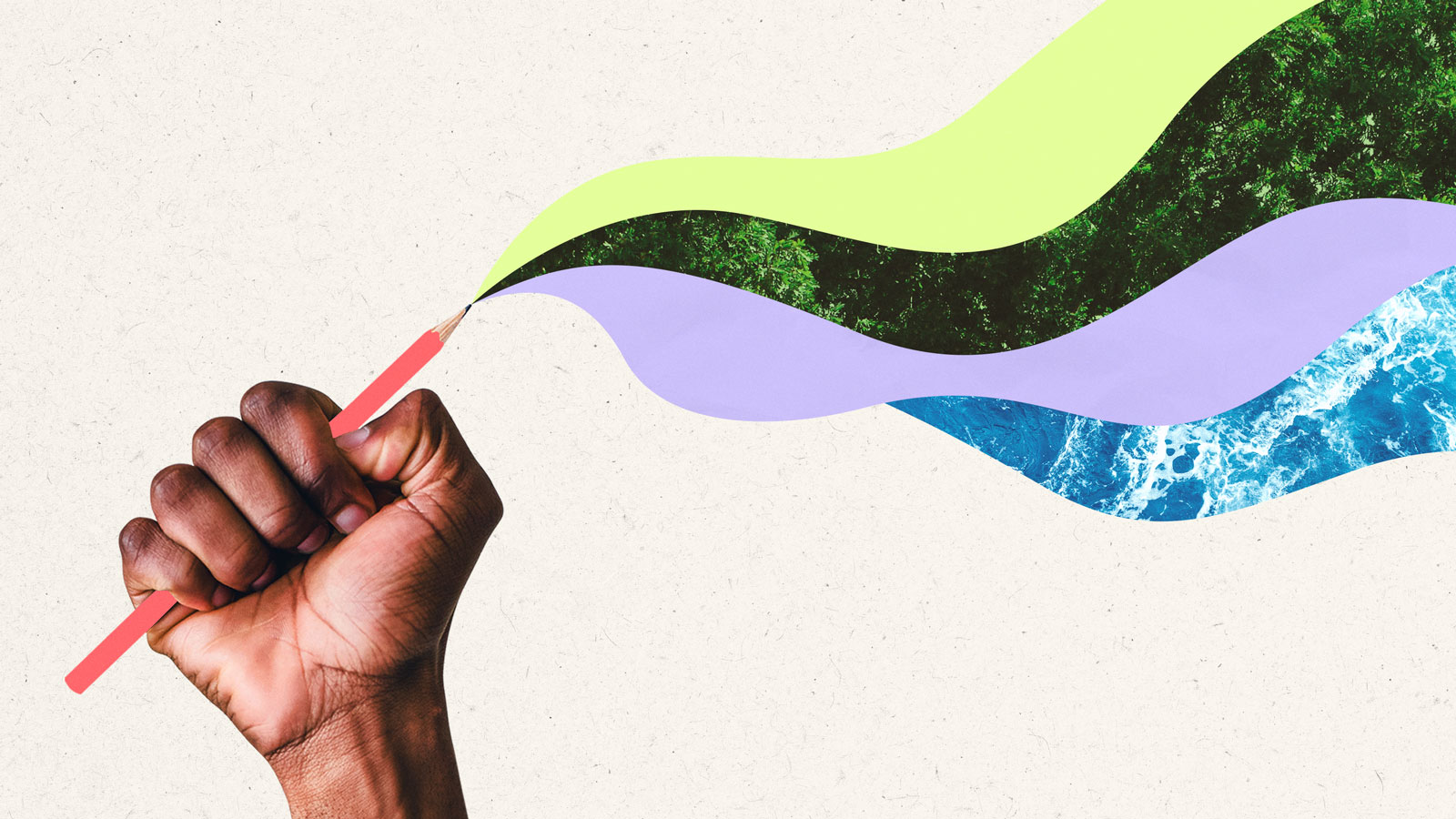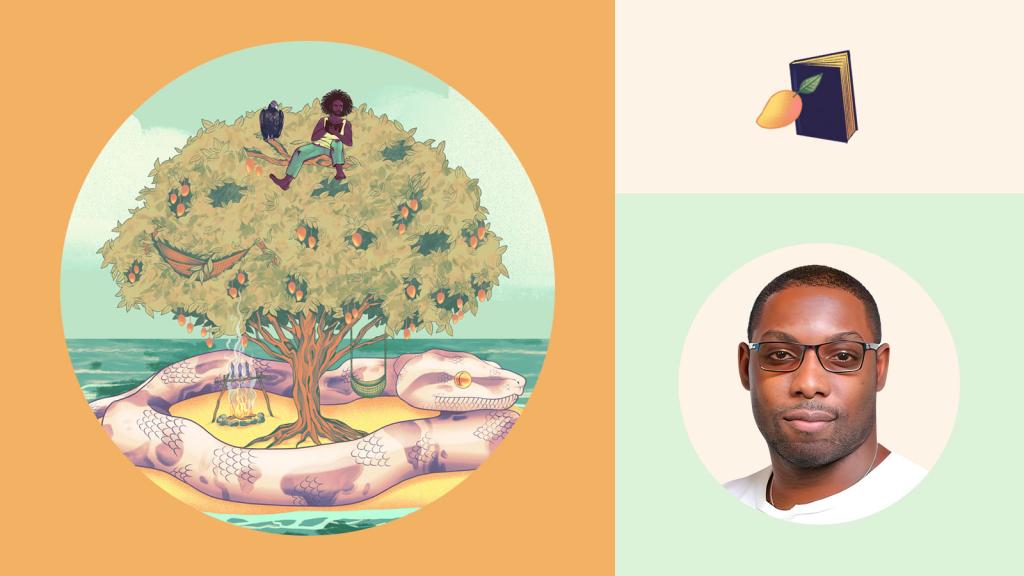This story is part of Fix’s Climate-Fiction Issue, which explores how fiction can create a better reality. Check out the full issue here, including the short stories in Fix’s first-ever climate-fiction contest, Imagine 2200.
***
During the tumultuous summer of 2020, as fires torched the West, hurricanes pummeled the South, and protests roiled cities nationwide, people across America discovered a book about a teenager navigating life in a world undone by poverty, inequality, and corruption.
The book’s stark portrayal of society collapsing under the weight of climate change, economic malaise, police militarization, and government ineptitude struck a chord. The book hit the New York Times bestseller list, earned praise from pundits and podcasters, and was devoured by book clubs from Manhattan to Los Angeles.
What kept all those readers entranced wasn’t a memoir or a work of literary realism, but Octavia E. Butler’s seminal climate-fiction novel Parable of the Sower, which was set in 2024 — and published nearly three decades ago, in 1993.
Butler’s prescience about how our environmental crisis would play out — she foresaw devastating fires, water scarcity, and growing waves of refugees — surely contributed to the book’s magnetic appeal. But her genius lies in how clearly she illuminated the disproportionate impact a warming world would have on the poor, people of color, and women, a reality many Americans are just now waking up to. Butler, who died in 2006, crafted an essential work that is relevant not only for exploring the unfolding disaster of climate change, but for revealing the injustice at the heart of it. If we’re to have any hope of addressing this existential threat equitably, we need more stories like it.
That’s because works like Parable of the Sower have long played a major role in driving social and environmental justice. Harriet Beecher Stowe helped energize the abolitionist movement prior to the Civil War with Uncle Tom’s Cabin. Upton Sinclair’s The Jungle, published in 1906, led to some of the nation’s first food safety regulations. Nearly 60 years later, Rachel Carson drew laypeople to the fledgling environmental movement by opening her landmark environmental science text Silent Spring with “A Fable From Tomorrow,” a story that imagines a world ravaged by industrial pollutants. In perhaps the most profound example, the 1983 TV film The Day After, set in post-apocalyptic Kansas, affected President Ronald Regan so deeply that it helped motivate him to broker a nuclear disarmament treaty with the Soviet Union.
“Fiction can transmit information really effectively in non-technical language,” says Patricia Valderrama, an assistant professor of English at Coe College in Cedar Rapids, Iowa. In doing so, it can “help people understand how an issue will affect them and be the catalyst to help them join an existing movement.”
Climate fiction in particular can have a powerful effect on readers by making them ponder the impact of a warming world on their lives and those of generations to come. Detroit organizer and activist Adrienne Maree Brown — one of four judges of Fix’s climate-fiction short story contest Imagine 2200 — credits Parable with helping her develop her ideas around “emergent strategy,” or identifying societal patterns and finding connections between seemingly disparate struggles in order to foster transformative change. She has drawn from Butler’s ideas to facilitate workshops focused on creating and connecting communities, and imagining just solutions to systemic problems. Brown also co-edited Octavia’s Brood: Science Fiction Stories from Social Justice Movements, an anthology inspired by Butler that illustrates how writing fiction can help activists hone their ideas and find their voice.
“Fiction can be the catalyst to help people join an existing movement.”
— Patricia Valderrama
Today, some of the loudest calls for climate justice are coming from young people. But many youth who are concerned about the crisis remain unsure about how to help solve it. “For my students, that’s often a question: What does it mean to be an environmental activist, and what form can it take?” says Sarah Dimick, an assistant professor of English at Harvard University.
Novels like Saci Llyod’s Carbon Diaries 2015, an eco-thriller about a teenage girl in the U.K. who lives through a period of government-mandated “carbon rationing,” can help by showcasing different types of activism — from radical actions like occupying planes to protest air-travel emissions to more subtle steps in our daily lives, such as planting a backyard garden. “It’s an interesting one to think with,” says Dimick, who has had her students read the book.
Even for folks with no interest in activism, stories about people on the front lines of climate change — the rural poor; Black, Indigenous, and Latinx communities; the Global South — help foster empathy among those who have not yet experienced the crisis firsthand. The best of these works make a crisis that may feel distant more immediate. “People are actually going through processes of dehumanizing entire nations, because if it happens in a faraway place to someone seen as less than human, it’s easier, psychologically, to deal with,” says Josh Long, a human geographer at Southwestern University in Georgetown, Texas. “Stories that show our shared human condition and ability to address these problems are really powerful.”
[Read: Can a VR experience spur real-world action in the climate fight?]
Some of the most impactful tales aren’t linear, or even fiction. Poems like Catherine Pierce’s “Anthropocene Pastoral” or “Love in the Time of Climate Change” by Grist 50 honoree Craig Santos Perez can be more effective at conveying hope, wonder, and connection with the earth. That’s because they are, as Dimick notes, “less bound to ideas of plot” that require conflict and, often, a villain. The storytelling traditions of many Native cultures challenge Western conventions around linear narratives by treating people of the past, present, and future as being in “continuous dialogs,” as Kyle Whyte, an environmental justice scholar at University of Michigan, puts it. This mode of storytelling can be particularly well suited to grappling with intergenerational, historically rooted problems like climate change.
Although the climate-fiction genre has in recent years exploded in popularity, relatively few of its writers treat climate justice as a substantive, central issue, says Rebecca Evans, an assistant professor of English at Southwestern University. She and undergraduate researchers Elena Welsh and Coleen Roche recently surveyed roughly 30 short stories, novels, and films to explore how the genre engages with climate justice. While most of the works they examined connect with its basic themes, white authors tend to make the issue peripheral to plotlines about protagonists staving off disaster or surviving a post-apocalyptic world on their own. Stories by queer, feminist, and BIPOC writers, on the other hand, often make the unequal impacts of climate change along existing lines of social power a core theme. These texts also tend to focus on communities and collective action. “[They explore] the social bonds and relationships and forms of obligation that can allow for adaptation under ongoing — not future-delayed — conditions,” Evans says.
It’s no accident that Black, Indigenous, and other writers of color are less likely to frame climate change as a looming apocalypse. Not only are they more likely to experience its impacts today, their people have already lived through world-ending apocalypses in the form of slavery, displacement, and genocide.
“The perspective in a lot of the speculative climate fiction written by people of color isn’t that the world was great and now it’s going to be awful,” says Stephanie Bernhard, an assistant professor of English at Salisbury University in Salisbury, Maryland. “It is, ‘We’ve been marginalized and fighting for justice for a really long time, and this is a new front in the fight.’”
By showing groups of people fighting together and forming new communities in the face of the apocalypse, stories like Cherie Dimaline’s The Marrow Thieves and N.K. Jemisin’s Broken Earth trilogy help combat the narrative that “we’re doomed, everyone go run for your bunker,” as Bernhard puts it. Despite the darkness of Butler’s vision, Parable of the Sower reveals a path forward in Earthseed, a religion created by protagonist Laura Olamina that focuses on building resilient communities and embracing change.
Perhaps that’s just what we need to overcome the sense of despair many of us feel these days. According to Earthseed, humanity’s destiny lies in colonizing other worlds. But its central message of working together to shape a better future can help us learn to live on this one.
Explore more from Fix’s Climate Fiction Issue:
- How a fictional innovation might become reality
- An interview with cli-fi author Lindsey Brodeck on the influence of linguistics on her work
- Read the 12 winning stories of Fix’s climate-fiction contest




